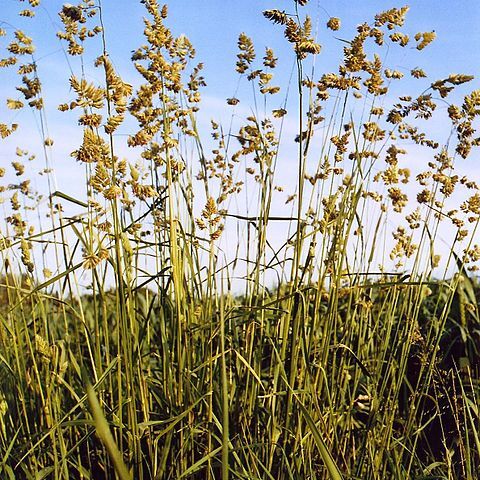Perennial. Leaf sheaths closed to middle; leaf blades linear, flat or folded. Inflorescence a lobed, 1-sided panicle, open or contracted; spikelets subsessile, densely clustered in compact fascicles on the panicle branches. Spikelets strongly laterally compressed, florets 2–5, disarticulating above glumes and between florets; glumes lanceolate, subequal, shorter than lemmas, strongly keeled, 1–3-veined; lemmas lanceolate to oblong in side view, papery or thinly leathery, strongly keeled, 5-veined, scabrid or ciliate along keel, apex cuspidate to briefly awned; palea slightly shorter than lemma, narrow, ciliolate along keels. Caryopsis oblong or slightly triangular; hilum round; endosperm soft.
Spikelets few-fld, flat, disarticulating above the glumes and between the lemmas; glumes unequal, nearly as long as the lemmas, 1–3-veined, keeled; lemmas obtuse or acute, usually mucronate or short-awned, keeled, 5-veined, the intermediate veins often inconspicuous; uppermost lemmas reduced; infl open, the lower branches naked at base, erect or divergent, the branches and main axis bearing numerous short-pediceled spikelets in dense one-sided clusters near the ends; perennial tufted grasses with compressed sheaths, long ligules and flat blades. Monotypic.
Tufted perennials. Leaf-blades flat. Inflorescence a lobed, 1-sided, condensed panicle, the branches crowded with compact fascicles of spikelets. Spikelets 2–5-flowered, strongly laterally compressed, almost sessile; glumes persistent, unequal, 1–3-nerved; lemmas strongly compressed and keeled, herbaceous with membranous margins, 5-nerved, shortly awned; palea shorter than or as long as the lemma.


